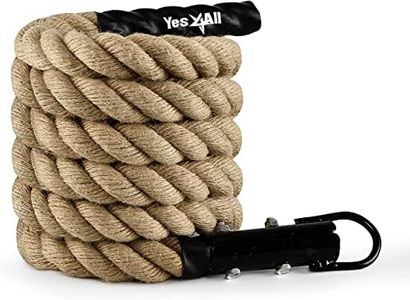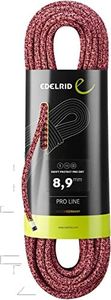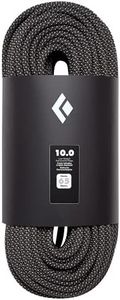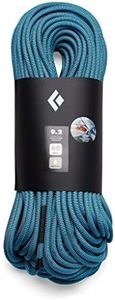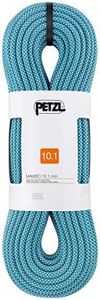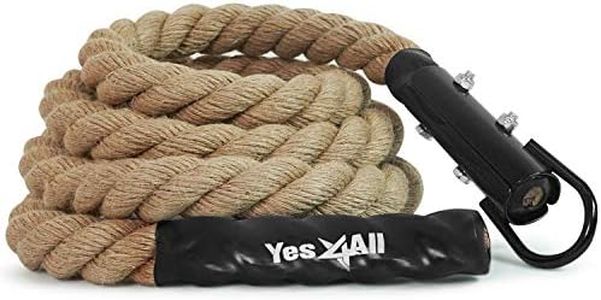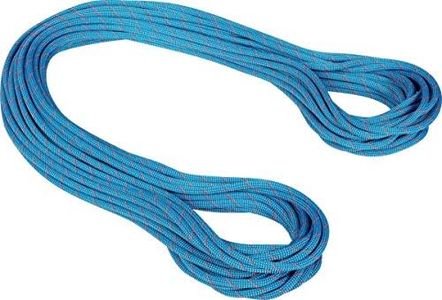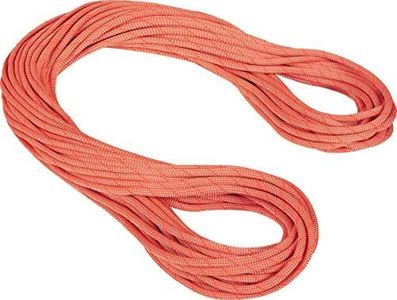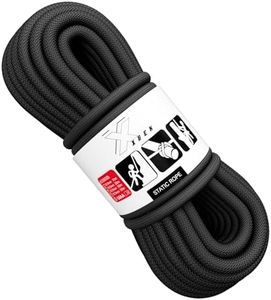10 Best Climbing Ropes 2025 in the United States
Sponsored
Sponsored
Our technology thoroughly searches through the online shopping world, reviewing hundreds of sites. We then process and analyze this information, updating in real-time to bring you the latest top-rated products. This way, you always get the best and most current options available.

Our Top Picks
Winner
EDELRID Swift Protect Pro Dry 8.9mm Dynamic Climbing Rope - Night/Fire 60m
The EDELRID Swift Protect Pro Dry is a versatile 8.9mm rope that suits various climbing styles since it's certified for use as a single, half, or twin rope. Its 60-meter length is a solid choice for most climbing routes. The Pro Dry finish stands out by keeping the rope water-repellent and dirt-resistant, absorbing less than 2% water, which helps maintain performance and durability in wet conditions. The Thermo Shield treatment improves handling, making it easier to manage during climbs, and the 3D lap coiling reduces tangles for faster rope work. A notable strength is the higher sheath content with aramid fiber, which adds cut resistance, important for protection when the rope runs over rough or sharp edges.
Weighing around 8 pounds, it strikes a balance between durability and manageability, though it might be slightly heavier compared to thinner ropes designed solely for sport climbing. One limitation is that, when used as a single rope, it’s not recommended for top-rope or workout climbing, meaning it’s better suited for lead climbing or multi-pitch routes. Climbers looking for a very lightweight or ultrathin rope for gym use might find this rope less ideal.
This rope is a strong all-rounder for outdoor climbers who want a durable, water-resistant rope capable of handling demanding conditions, especially in mixed or alpine settings, but less so for casual top-rope sessions indoors.
BLACK DIAMOND Equipment 10.0 Static Rope 65M - Black - 65M
Most important from
9 reviews
The Black Diamond 10.0 mm Static Climbing Rope is designed primarily for rappelling and fixed rope applications, not for lead climbing or situations requiring dynamic stretch to absorb falls. At 65 meters in length, it’s a good match for use with a 60-meter dynamic rope, as intended. Its 10.0 mm diameter offers decent durability and handling, though it’s thicker and less flexible compared to thinner dynamic ropes used for lead climbing.
This rope is static, meaning it has minimal stretch, which helps when ascending or rappelling but makes it unsuitable for catching falls where shock absorption is critical. Weighing about 1 pound, it is relatively light for its size, making it convenient to carry. Supported by Black Diamond’s reputable brand, this rope serves as a solid choice for climbers needing a reliable static line for tasks like rappelling, hauling, or fixed rope climbs.
For climbing scenarios that require dynamic ropes with stretch and impact absorption to handle falls, this static rope would not be the best fit.
Most important from
9 reviews
BLACK DIAMOND Equipment 9.2 Dry Climbing Rope - Babsi Edition - Blue-Red - 80M
Most important from
2 reviews
The Black Diamond 9.2 Dry Climbing Rope - Babsi Edition is a solid choice for climbers who need a reliable, weather-resistant rope. Measuring 80 meters in length with a diameter of 9.2 mm, it strikes a good balance between manageability and durability, making it suitable for a variety of climbing styles including sport and trad climbing. This rope is a single type, meaning it’s designed to be used alone rather than in pairs. Its dry treatment protects both the core and sheath from moisture, which is a big plus for climbing in wet or icy conditions, helping the rope stay lighter and safer when wet.
The 1X1 woven sheath adds extra abrasion resistance, so it holds up well against rough surfaces and frequent use. The triple dash middle marker is a useful safety feature, clearly showing the rope’s midpoint to assist in better rope management during climbs. The 9.2 mm thickness suggests it should still be comfortable to handle, even if not the lightest option available.
This rope suits intermediate to advanced climbers looking for a dependable, dry-treated rope with strong abrasion resistance. It also has positive user reviews reflecting satisfaction with its performance and quality.
Most important from
2 reviews
Buying Guide for the Best Climbing Ropes
Choosing the right climbing rope is crucial for your safety and performance while climbing. The right rope can make a significant difference in your climbing experience, whether you're a beginner or an experienced climber. When selecting a climbing rope, consider the type of climbing you will be doing, the frequency of use, and your personal preferences. Here are some key specifications to help you make an informed decision.FAQ
Most Popular Categories Right Now
